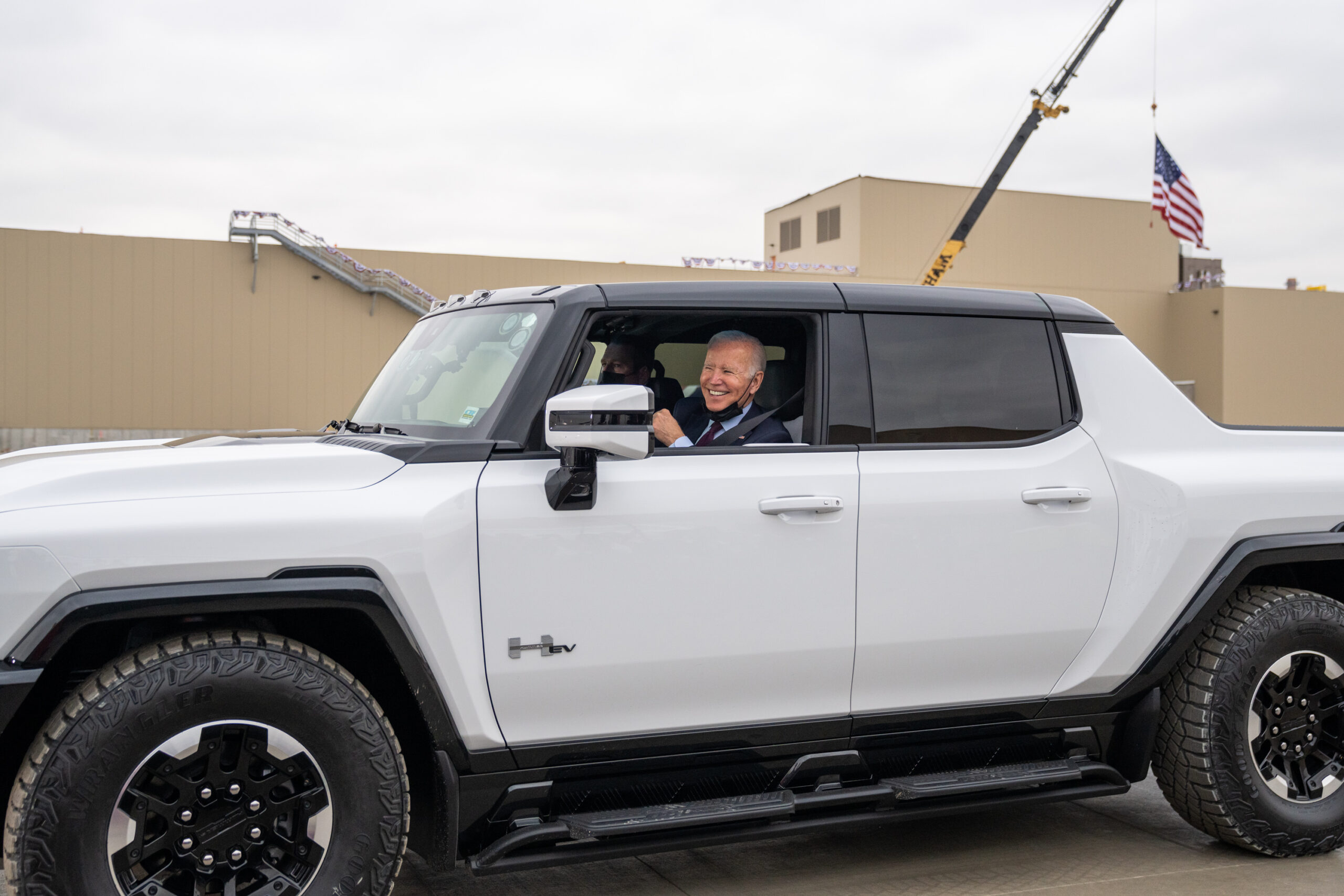Reuters reported Thursday on a recent meeting between the White House Office of Management and Budget officials and General Motors (GM) executive David Strickland. In the meeting, Strickland complained about proposals for updated vehicle emissions rules, which he argued could cost the industry from $100 to $300 billion dollars from 2027, when the rule would take effect, to 2031. Rather than acquiesce to the dire warnings of an economically interested party, the Biden administration did the right thing — it called Strickland’s numbers “pure speculation and inaccurate.”
Strickland’s fearmongering is based on newly issued regulations from both the Environmental Protection Agency (EPA) and the National Highway Traffic Safety Administration (NHTSA). The EPA rules, released back in April, set higher standards for tailpipe emissions, while the NHTSA regulations require companies to produce increasingly fuel-efficient vehicles, measured by the average miles per gallon of their models. Since internal combustion engine vehicles pollute a lot and are fuel-inefficient, both standards — when set high enough — can functionally require companies to produce some amount of electric vehicles. Naturally, then, some Republican officials are up in arms about the regulations. Eleven Republican State Attorneys General filed a joint lawsuit over significantly less stringent NHTSA regulations last year, and 25 got together to encourage the Biden administration to abandon the new EPA rules at the beginning of July. Both efforts cited higher costs for automakers, an argument that GM has clearly aligned itself with.
In contrast to Strickland’s predictions and the arguments of Republican AGs, administration officials told Reuters that the new regulations will likely cost the auto industry anywhere from basically nothing to $3 billion annually, a far cry from GM’s estimate and quite a small price to pay for the predicted 56% cut to emissions. Officials further predicted that the regulations would save consumers money, with far lower fuel costs offsetting any increase in car prices. Of course, saving consumers money was likely not top-of-mind for the GM executive — his concern is with increasing profits at the expense of consumers’ pocketbooks.
GM’s predictions are not only erroneous, but the company has already made an extremely public commitment to transition completely to electric vehicle sales by 2035. The EPA and NHTSA rules that GM argued would be too costly would only require about 67% of sales to be electric by 2032. Additionally, the company said in 2021 that it aimed to double revenue by 2030, mainly through increased electric vehicle sales. It’s hard to see how GM could double its revenue by 2030, go fully electric by 2035, and still be unable to comply with the administration’s 2032 goal. GM is simply trying to fearmonger the administration into allowing car companies to flout emissions standards without incurring more fines (see GM’s recent $130 million fine).
On Friday, the administration officially proposed the NHTSA rules that GM was complaining about. Now comes the comment period, where automakers will continue to complain, even if the more stringent standards mean lower costs for consumers and less tailpipe emissions that would further poison our already-dying planet. To its credit, the Biden administration finally seems willing to listen to advocacy groups and ignore the wishes of those whose profits come at the cost of a liveable planet (we’re still awaiting the same posture towards oil barons). If NHTSA is willing to listen to automakers at all, it should ignore their deceptive lobbying efforts and instead make them to live up to their public-facing commitments, where they’re willing to endlessly tout their (dubious) green bona fides for some fawning media attention and an extra buck.
The above photo is a work of the U.S. federal government and is in the public domain.

